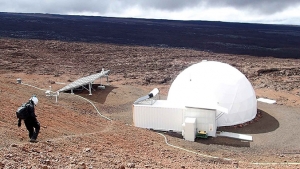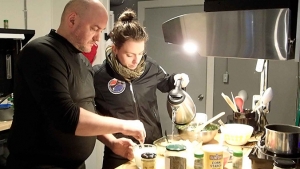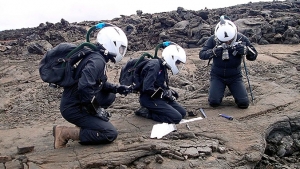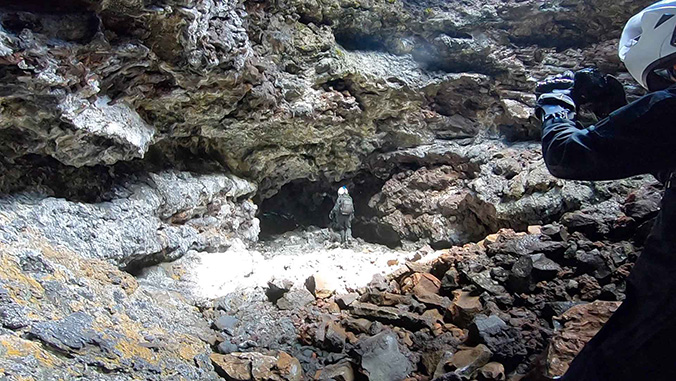


The six-member crew at the University of Hawaiʻi at Mānoa’s Hawaiʻi Space Exploration Analog and Simulation (HI-SEAS) habitat on the slopes of Mauna Loa on Hawaiʻi Island has been hard at work with geological and drone surveys, lava tube exploration and space technology testing. They have been cooking with shelf stable ingredients and passing some of their free time playing cards.
They are also performing a research experiment designed by high school students in Slovakia who won a Mission to Mars competition last year organized by HI-SEAS and International Moonbase Alliance (IMA) chief investigator Michaela Musilova.
Musilova explained, “It is focused on being able to fertilize soils and grow things like spinach in these soils by using human hair. So it’s a very interesting experiment and the whole crew is going to be part of this.”
Musilova, who is also serving as crew commander, says the mission is off to a “very good start,” in spite of some challenges with power cycling on and off and a temporary “disconnection from Earth.”
Crew systems engineer Nityaporn Sirikan, who works for the European Space Agency (ESA), said, “Yes, when I came here there were quite some challenges in the habitat. We had to do some engineering intervention to fix the problem and now it seems everything is resolved.”
The mission is under the EuroMoonMars initiative, led by the International Lunar Exploration Working Group of ESA in collaboration with the IMA, European Space Research and Technology Centre, Vrije Universiteit (VU) Amsterdam and HI-SEAS. It is part of a series of projects led by IMA, which is planning on building a base on the Moon and a prototype moonbase on Hawaiʻi Island.
“I thought it would be an amazing experience to feel how it is like to be an astronaut, not on Earth, but on the Moon or somewhere else in the universe,” said crew member Annelotte Weert, a master’s student at VU Amsterdam. “And to see how you have to live and how you can do science.”
The crew entered the habitat on February 20, 2019. The current mission is scheduled to end on Wednesday, March 6, 2019, at noon. Media interested in covering the crew exit should contact Michaela Musilova, chief investigator, HI-SEAS, musilova@moonbasealliance.com or Amy Higa at (808) 536-2729, (808) 386-6790 or ahiga@iq360inc.com.
Read previous HI-SEAS stories.
—By Kelli Trifonovitch


